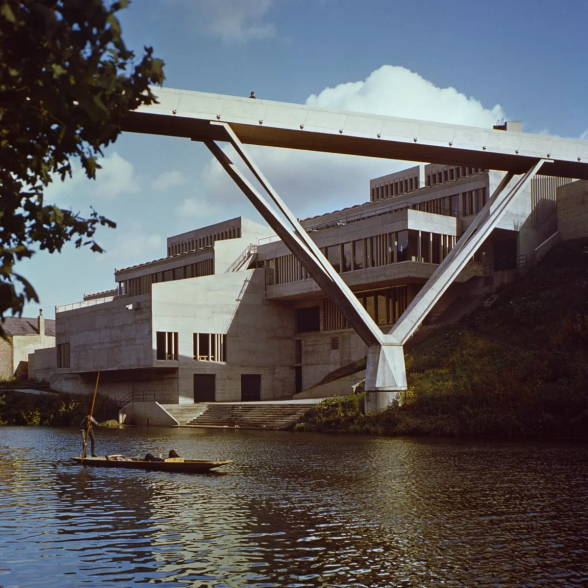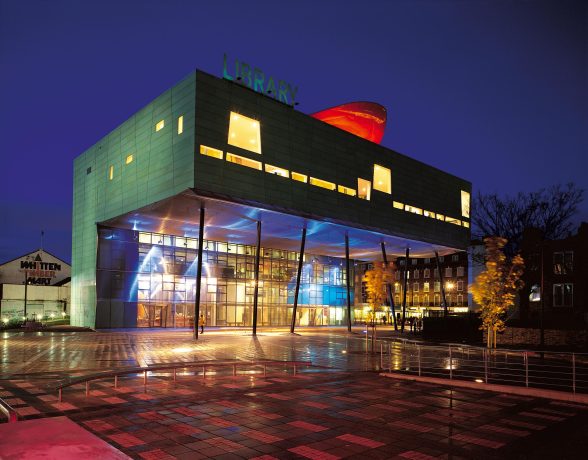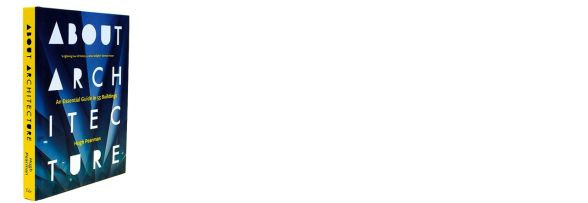Hugh Pearman – respected architectural writer, editor and journalist, and newly appointed chairman of C20 Society. Image: Sarah M Lee As C20’s new Chairman – the respected architectural writer and journalist, Hugh Pearman – takes up the post, Director...
 Hugh Pearman – respected architectural writer, editor and journalist, and newly appointed chairman of C20 Society.
Hugh Pearman – respected architectural writer, editor and journalist, and newly appointed chairman of C20 Society. Image: Sarah M Lee
As C20’s new Chairman – the respected architectural writer and journalist, Hugh Pearman – takes up the post, Director Catherine Croft sat down with him to discuss his own journey in architecture, the future of conservation and C20, and his priorities in the role.
When were you first conscious of your interest in architecture?
As a student at Durham, where I was studying English with a bit of Philosophy. I was at St Chad’s College, which faces the east end of the Norman Cathedral. So, I was surrounded by medieval and Georgian architecture, but also an amazing mix of recent C20 buildings. The Dining Hall at St Chad’s is by the neo-classical architect Francis Johnson, which I only discovered later, but there was also Ove Arup’s Kingsgate footbridge across the Wear gorge to ACP’s jaggedly Brutalist Dunelm House (now listed), and in the other direction the modern-medieval University library on Palace Green by George Pace. These all date from the same period, early 1960s. I am catholic in the architecture I like, perhaps because I loved this jumble of styles coexisting happily.
Were you tempted to study to become an architect yourself?
Not at all! I never thought about it! I can’t draw or design, I always wanted to write.
You were starting out at the end of the 1970s, a period currently generating lots of casework for C20 Society. What was happening in the world of architecture from your perspective?
Architecture was at an interesting point and not many people were writing about it. It was the time of the death throes of one kind of modernism, and the very beginnings of post modernism. Obviously, I couldn’t see that then, that’s with the benefit of hindsight. But all sorts of interesting things were happening—from the Alexandra Road housing in Camden, to neo-vernacular tithe barn ASDAs, everything seemed up in the air.
 Formative years: The old and new architecture of Durham, including Dunelm House and Kingsgate Bridge (1963-66)
Formative years: The old and new architecture of Durham, including Dunelm House and Kingsgate Bridge (1963-66) Image: C20 Society
And how did you break into architectural journalism?
After uni, I took a graduate trainee place at a firm of trade magazine publishers. I worked on a travel agents’ mag for a while, after which the deal was that I could choose from whatever vacancies were on offer elsewhere. The one that interested me was an architects’ newspaper called Building Design, then edited by Peter Murray. I got to be news editor there, then quit to become an in-house editor at BDP of Preston Bus Station fame. My boss was Richard Saxon. While there I started freelancing for newspapers – the Guardian and Observer among them. Finally I went fully freelance, and was lucky enough to walk into the vacant architecture critic position at the Sunday Times. I thought this could never last, but it lasted 30 years, to the end of 2015. Other freelance work continued, and books started to make an appearance.
But I’d always had a hankering to be an editor as well as a writer, and that opportunity finally came when I took on the RIBA Journal in September 2006, retiring in December 2020. Writing for a professional audience is very different to a lay one. You have to speak in different voices. And we always tried to avoid being institutionalised.
I’ll come on to focusing on C20 – I know that you have been aware of our work for a long time, and very supportive of recent battles, including the alterations to the Sainsbury Wing of the National Gallery – but how do you think conservation more broadly is doing at the moment?
I am concerned. It feels as if many hard-won gains are under attack. For instance, since my teens I’ve admired the huge achievement of post-war restoration of canals and navigable rivers, but now the money to keep them going has been slashed to a dangerously low level by the Government . Many conservation organisations have an aging demographic, they are still run by those who had fire in their bellies in the 1970s, and they now need to bring in new blood. Plus in architecture there is definitely a culture wars effect, it feels like a time of retrenchment and uncertainty, and with incomes effectively falling it has become politically expedient to look back to an imagined golden past, to the “right sort of old” and 70-year-old Brutalism, say, is for these people not the right sort of old. They prefer antique-effect. Well, the Society is here for the best neo-geo and all other styles since 1914 too!
So what do you think C20 Society’s priorities should be at the moment?
It’s important that C20 should be seen as studiously neutral, not biased in its style choices. That’s already a strength. And we must never be seen to be in opposition to the architectural profession. Architects are our allies, and C20 has long been advocating for retrofit, which is great. We still throw away too many good buildings and we need to promote good examples of successful reuse, such as (since I’ve mentioned it) Preston Bus Station or the former Herman Miller Factory in Bath (now a campus for Bath Spa University). We need to reach out to more architects, get them on board as members and supporters, and encourage them to talk to us more at pre-application stage when they are altering major C20 buildings.
What about current calls for “beauty”, do you think those voices are helpful, and how should we respond?
In the architectural world the word “beauty” has been claimed by traditionalists as synonymous only with their approach. This is plainly absurd – beauty can be apparent in any style or approach, and is both subjective and mutable. Everything can’t be ‘beautiful’ anyway – that’s like saying everything must be above average. What’s wrong with ‘good ordinary’, in whatever style? Architecture needs biodiversity, not monocultures. Hence my evocation of old and new Durham at the start of this. Good design, better materials and good craft skills are of course vital, but they are not the sole preserve of any one architectural persuasion, as the range of styles of twentieth century listed buildings demonstrates. It’s a bit of a febrile period right now but over time, all this will settle down, as style wars always do. Meanwhile, it’s our job to stay alert lest there are unfortunate casualties of the present faddishness.
 Millennium projects come of age: Alsop and Störmer’s Peckham Library (1998-2000) –
Millennium projects come of age: Alsop and Störmer’s Peckham Library (1998-2000) – Image: Roderick Coyne / Alsop Arch
How about C20 Society’s recent broad campaigns? Have you followed them and do you think they are working?
Yes, I’ve been particularly struck by the Department Stores campaign—a great response to “The Death of the High Street”. It’s good to see more developers now coming forward with conversion proposals. And I’m very concerned about the last generation of coal-fired power stations with their cooling towers. Drax near Selby is my favourite, I love the way it is an almost symmetrical grouping and how well it sits in the wider landscape. To see all those great industrial landmarks vanish forever would be tragic.
So what will be your priorities as Chairman?
Fundraising, never easy, has to be crucial—we need to be able to do more of what we do, more professionally, and that means being able to employ more staff, pay them properly and give them the resources to deliver. That includes good design, up to date communications and the ability to call in specialist help when needed (for planning inquiries, for instance, or to challenge dubious environmental claims). I’ll be looking to strengthen the board, and looking at ways to broaden the membership, many of whom are already actively involved: our volunteers are the best! I’d like more large architecture and design practices to join us, and I’d like to find common ground with the best property developers, working with them rather than being thought of as only oppositional.
To an extent we have to work ahead of public taste, identifying the best of the recent past at the moment when it may be at its most unfashionable. The raft of Millennium projects will be coming up to their 30-year anniversaries before too long. What and where will be the first 21st century listed building? This is why our members around the country are so vital. You really are our eyes and ears.
Having sat in already on most of the C20 committees and seen the work going on, I’m encouraged by the way this is fun as well as being a serious business. There’s a real joy, for instance, in our caseworkers unearthing a previously little-known gem of a building, or in successfully heading off insensitive alterations. Often it’s a matter of education, of enthusing others. And we have no shortage of enthusiasts.
Hugh’s most recent book is About Architecture: An Essential Guide in 55 Buildings (Yale University Press), 2023, available to order here.



